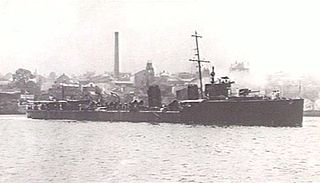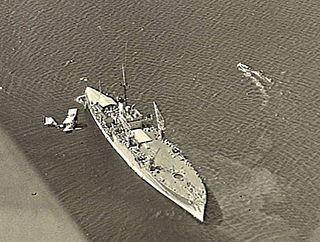See also
- HMS Albatross - seven units of the Royal Navy
One ship and one shore base of the Royal Australian Navy (RAN) have borne the name HMAS Albatross, for the albatross:

Five ships of the Royal Australian Navy (RAN) have been named HMAS Sydney, after Sydney, the capital city of New South Wales.
One ship and one shore base of the Royal Australian Navy have been named HMAS Derwent, after the Derwent River in Tasmania.
Two ships and one shore establishment of the Royal Australian Navy (RAN) have been named HMAS Huon, after the Huon River in Tasmania.
Four ships of the Royal Australian Navy been named HMAS Parramatta, for the Parramatta River. The name comes from the Barramattagal people.
Three ships of the Royal Australian Navy (RAN) have been named HMAS Swan, for the Swan River in Western Australia.
Two ships of the Royal Australian Navy have been named HMAS Warrego, for the Warrego River in Queensland.
There have been one ship and one shore establishment in the Royal Australian Navy (RAN) named HMAS Waterhen. The first ship originally served under the name HMS Waterhen with the Royal Navy (RN). A British ship and an Australian ship of the name were ordered but later cancelled.
One ship and one shore establishment of Royal Australian Navy (RAN) have been named HMAS Cairns, for the city of Cairns, Queensland.
Three ships and two shore installations of the Royal Australian Navy have been named HMAS Penguin after the aquatic, flightless bird:
An albatross is one of a family of large winged seabirds.

HMAS Huon (D50), named after the Huon River, was a River-class torpedo-boat destroyer of the Royal Australian Navy (RAN). Originally to be named after the River Derwent, the ship was renamed before her 1914 launch because of a naming conflict with a Royal Navy vessel.

HMAS Albatross was a seaplane tender of the Royal Australian Navy (RAN), which was later transferred to the Royal Navy and used as a repair ship. Albatross was built by Cockatoo Island Dockyard during the mid-1920s and entered service at the start of 1929. The ship experienced problems with the aircraft assigned to her during her career: the amphibious aircraft she had been designed for were retired just before the ship entered service, the replacement aircraft could not be catapult-launched from the ship, and a new plane designed specifically to work with the ship began operations after Albatross was demoted from seagoing status in 1933.

HMAS Albatross is the main naval air station for the Royal Australian Navy's (RAN) aviation branch, the Fleet Air Arm. The base, located near Nowra, New South Wales, was formally established in May 1942 as Royal Australian Air Force (RAAF) base RAAF Nowra, then was transferred to the Royal Navy as HMS Nabbington in 1944, and operated as a naval air station until it was decommissioned in late 1945. In 1948, the airfield was commissioned into the RAN as HMAS Albatross, as the primary shore base for the Fleet Air Arm. Since 2011, four squadrons of the Fleet Air Arm operate from Albatross. The current commander of the base is Captain Robyn Phillips, RAN.
One ship and one naval base of the Royal Australian Navy have been named HMAS Melville, after Melville Island.

723 Squadron is a Royal Australian Navy Fleet Air Arm squadron. The squadron was first raised in 1952 and throughout its history has served operationally during the Vietnam War, the Gulf War and in East Timor. It currently operates as a helicopter training squadron and is based at HMAS Albatross at Nowra, New South Wales.

No. 101 Flight RAAF was a Royal Australian Air Force fleet co-operation flight equipped with amphibian aircraft. The flight was formed on 1 July 1925, and operated from the Royal Australian Navy seaplane tender HMAS Albatross between 1929 and 1933. After Albatross paid off the flight's aircraft operated from the RAN's heavy cruisers HMAS Australia and HMAS Canberra. No. 101 Flight was expanded to form No. 5 Squadron on 20 April 1936.
Six ships of the Royal Navy have borne the name HMS Albatross, after the seabird, the albatross. A seventh was planned but never completed:

725 Squadron is a naval aviation squadron of the Royal Australian Navy (RAN) Fleet Air Arm. The squadron was originally created in August 1943 as part of the Fleet Air Arm of the Royal Navy. It initially served as a fleet requirements unit, was rerolled in August 1945 as a target towing unit, then was disbanded in December 1945. In January 1958, the squadron was re-formed, as a fleet requirements and communications unit of the RAN, operating a variety of fixed-wing aircraft. The squadron was redesignated as an anti-submarine warfare training squadron in May 1959, then was decommissioned in May 1961 and absorbed into 724 Squadron. 725 Squadron was recommissioned in November 1962 as an operational anti-submarine helicopter squadron, flying the Westland Wessex. During this commission, the squadron was involved in HMAS Sydney's troop transport voyages, the rescue of personnel following the Melbourne-Voyager collision, and the Operation Navy Help Darwin relief effort post-Cyclone Tracy. The squadron was decommissioned in December 1975. 725 Squadron was commissioned for the fourth time in June 2015, this time as a training unit for MH-60R Seahawk Romeo helicopters: the squadron had been reactivated two years prior as a non-commissioned unit train on and accept into service the Romeos.
HMAS Cerberus is the name given to a number of Royal Australian Navy ships and shore establishments, after the mythological Cerberus.